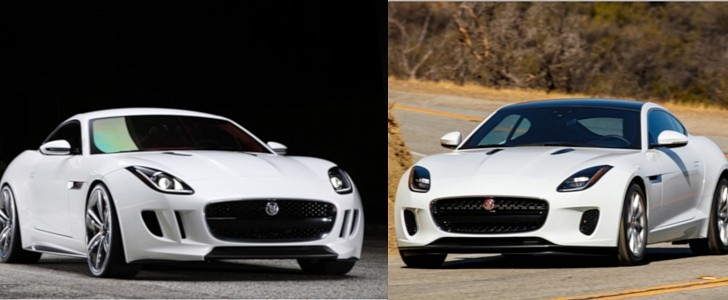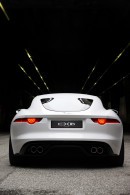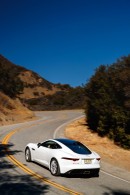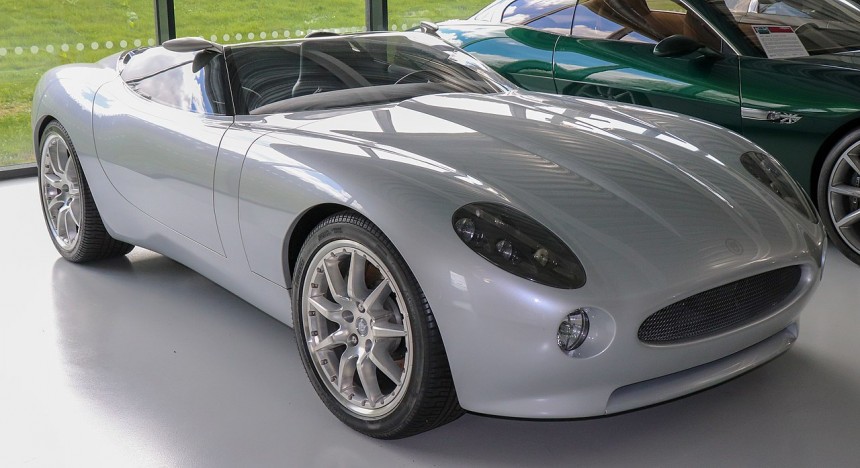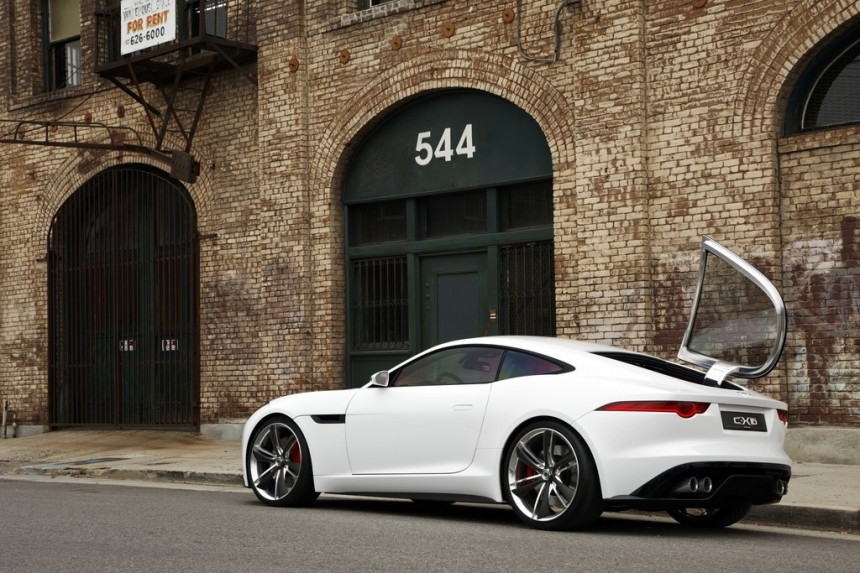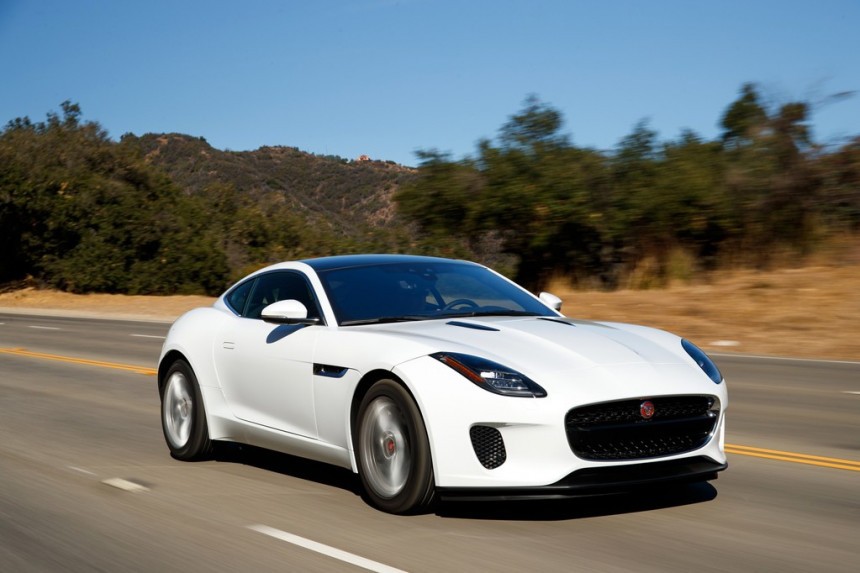The story of the F-Type started when the final E-Type left the assembly lines back in 1975, and it took a long, painful road to the final unveiling at the Paris Motor Show in 2012, a road that included a few attempts of revival.
Some concept cars existed only to test the public's reaction, while others were showcased to see if the carmaker needs to make some final adjustments. Thus, the road from Concept to Reality is different and some production models are improved on the way, as in this situation. Before reaching assembly lines, the F-Type went through three concept cars while Jaguar was sold twice. No wonder that it took it 16 years to get to its first customer.
When Jaguar joined Ford Motor Company in 1999, the British brand's fans hoped that the American carmaker would save the cat. But things didn't go exactly that way. Instead, the Blue-Oval brand tried to get more money from its own platforms. Thus, it introduced the S-Type in 1999 and the X-Type in 2001. While the former was related to the Lincoln LS, the latter used the same platform as the European Ford Mondeo. Then, adding insult to injury, the X-Type received a station wagon bodywork named Sportswagon in the U.S.
Jaguar tried to prove its value and started to work on the F-Type roadster concept, penned by Geoff Lawson. Unfortunately, he passed away in 1999 and didn't see its creation, but his work was carried over by Ian Callum, who became the new Director of Design for Jaguar. The concept was unveiled at the 2000 North American International Auto Show. It was a blast, but the hype didn't last long.
Unfortunately, after Ford bragged about what it would do with the cat brand, it tossed the F-Type away in a closet like a used doll and said that it would use the money in Formula 1, which it did and failed after four years and two podium finishes. Thus, it killed two cats with one stone (pun intended).
Some of you might remember the 2007-2008 financial crisis that brought pain and misery to many of us. For Jaguar, the future didn't look as bright either because Ford put it up for sale and, in January 2008, announced that the preferred bidder was Tata Motors from India. There were a lot of jokes after the acquisition, such as "the cat will wear a pagri," or a turban as is better known. But the reality was far more different.
Soon, money came from the Indian concern, and the brand was revived. Ian Callum burned the midnight oil and revived the F-Type concept after creating the stunning CX-75. This time, he made the sportscar with a closed bodywork. In 2011, at the Frankfurt Motor Show, he unveiled the CX-16 as a fastback coupe with wide rear shoulders and an aggressive stance. Even though it looked almost ready to enter production, few people believed it would make it on the assembly line. Some even joked if that was a sign for Jaguar's return in Formula 1.
But Jaguar had other, brighter ideas. Even though the concept looked very close to a production model, there were a few differences. For example, Ian Callum came with the idea of creating a side-hinged door at the back. Thus, he connected the new model with the famous Jaguar E-Type of the '60s and early '70s. But since it was impractical, I bet nobody cried over the feature that didn't make it into production.
It was the smallest car built by Jaguar since the XK120 in 1954 and featured an aluminum bodywork. Since Jaguar was sold as a package with Land Rover to Tata Motors and the off-road carmaker had a vast experience building such aluminum bodyworks, they worked together, and the result was remarkable.
At first, in 2012, it came as a roadster. Its low stance with curved lines over the front fenders and the front bumper were almost identical to the 2011 concept car. Sure, there were a few mandatory modifications due to road legislation. But it kept the pop-out door handles with that shaved look. It didn't target the same customers as the Mustang, but it got some from the Mercedes-Benz SLK or the BMW Z4.
Like the concept car, the production version came with a long, sloped roofline extended over the trunk. However, while some purists claimed it was no longer a true coupe, new customers said, "shut up, and take my money." And that's what Jaguar gladly did. At first, the car came with powerful V6 supercharged engines. Later on, the carmaker added other choices, such as a supercharged V8 or a turbocharged inline-four. The only broken promise was for a hybrid powertrain, which was not available. On the other hand, Jaguar added the all-wheel drive option for specific versions, which was far more appreciated by its customers.
Jaguar managed, somehow, to get with the F-Type the same result as Chrysler with the Viper concept. Indeed, they are nowhere near in terms of performance, but both concept cars looked almost identical to their production versions. And both carmakers proved, once again, that when a promise is kept, results will follow.
When Jaguar joined Ford Motor Company in 1999, the British brand's fans hoped that the American carmaker would save the cat. But things didn't go exactly that way. Instead, the Blue-Oval brand tried to get more money from its own platforms. Thus, it introduced the S-Type in 1999 and the X-Type in 2001. While the former was related to the Lincoln LS, the latter used the same platform as the European Ford Mondeo. Then, adding insult to injury, the X-Type received a station wagon bodywork named Sportswagon in the U.S.
Jaguar tried to prove its value and started to work on the F-Type roadster concept, penned by Geoff Lawson. Unfortunately, he passed away in 1999 and didn't see its creation, but his work was carried over by Ian Callum, who became the new Director of Design for Jaguar. The concept was unveiled at the 2000 North American International Auto Show. It was a blast, but the hype didn't last long.
Unfortunately, after Ford bragged about what it would do with the cat brand, it tossed the F-Type away in a closet like a used doll and said that it would use the money in Formula 1, which it did and failed after four years and two podium finishes. Thus, it killed two cats with one stone (pun intended).
Soon, money came from the Indian concern, and the brand was revived. Ian Callum burned the midnight oil and revived the F-Type concept after creating the stunning CX-75. This time, he made the sportscar with a closed bodywork. In 2011, at the Frankfurt Motor Show, he unveiled the CX-16 as a fastback coupe with wide rear shoulders and an aggressive stance. Even though it looked almost ready to enter production, few people believed it would make it on the assembly line. Some even joked if that was a sign for Jaguar's return in Formula 1.
But Jaguar had other, brighter ideas. Even though the concept looked very close to a production model, there were a few differences. For example, Ian Callum came with the idea of creating a side-hinged door at the back. Thus, he connected the new model with the famous Jaguar E-Type of the '60s and early '70s. But since it was impractical, I bet nobody cried over the feature that didn't make it into production.
At first, in 2012, it came as a roadster. Its low stance with curved lines over the front fenders and the front bumper were almost identical to the 2011 concept car. Sure, there were a few mandatory modifications due to road legislation. But it kept the pop-out door handles with that shaved look. It didn't target the same customers as the Mustang, but it got some from the Mercedes-Benz SLK or the BMW Z4.
Like the concept car, the production version came with a long, sloped roofline extended over the trunk. However, while some purists claimed it was no longer a true coupe, new customers said, "shut up, and take my money." And that's what Jaguar gladly did. At first, the car came with powerful V6 supercharged engines. Later on, the carmaker added other choices, such as a supercharged V8 or a turbocharged inline-four. The only broken promise was for a hybrid powertrain, which was not available. On the other hand, Jaguar added the all-wheel drive option for specific versions, which was far more appreciated by its customers.
